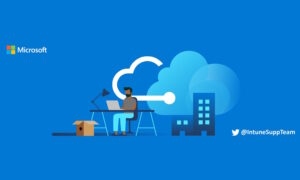
Microsoft should dig into the WebKit to stop Google from framing IE
Internet Explorer is in a state of crisis so severe that Microsoft may yet lose most of the browser market territory claimed during the browser wars. Microsoft has no choice but to make a leap of development faith, by abandoning the IE rendering engine and releasing new WebKit-based desktop and mobile browsers. IE is a dead platform. It's long past time for Microsoft to end its "Weekend at Ernie's" behavior.
What a difference a decade makes. Ten years ago, Microsoft won the browser wars with Netscape, only to abandon the territory after Internet Explorer 6 launched. Many end users are still stuck in the IE 6 past, whether it's the browser directly or progeny Internet Explorer 7 or 8. According to Net Applications, IE 6 usage share is higher than either of the newer versions. Perhaps IE's market position would be better had Microsoft not let browser development lay idle until after Mozilla started working on Firefox about six years ago. AOL and Mozilla reignited browser development because of paid search -- that Google box -- as did several other software developers. AOL eventually gave up on Netscape, but Apple, Mozilla and Opera continued developing browsers.
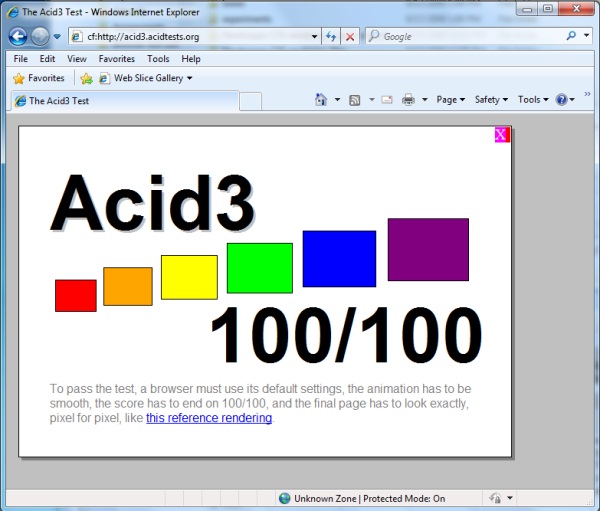
Chrome Frame erodes IE from the inside: Can Google get away with this?
Yesterday's revelation by Google that its open source Chromium lab developers have been testing deploying the Chrome browser engine as an Internet Explorer add-on called Chrome Frame, and its subsequent opening up of that project to the public, is a surprisingly ballsy move from a company typically known for being cool, plain, and innocent-looking. Quite seriously, the complete engine is being offered as a downloadable add-on, with the promise that developers will be able to retool their sites to let IE users render them using standards accepted by developers rather than those deployed by Microsoft.
But that's not exactly what happens -- and in fact, that last phrase could apply in any number of cases to how the browser-within-a-browser actually works. First, for developers to be able to utilize these standards, they're being invited to include tags in their code that target a specific browser, such as <meta http-equiv="X-UA-Compatible" content="chrome=1">
But as you can plainly see, that browser isn't IE. It's Chrome, which means that Google Frame is actually an incentive to get more developers to target Google's browser specifically.
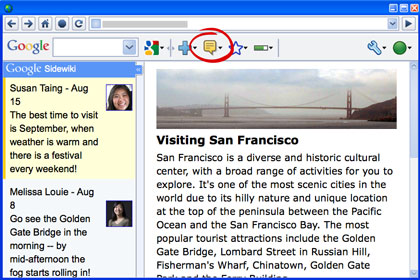
New Google tool adds a comment section to every Web site
Today, Google launched a new project called Sidewiki, which is a browser sidebar that lets users add footnotes to any existing Web page, even if the main site doesn't allow comments. Sidewiki has been added as a feature on Google Toolbar for Firefox and Internet Explorer, and the team today said they're working on an edition for Chrome, too.
Sidewiki appears as a field on the left hand side of the browser, where users can post contextual commentary. If it's a site paraphrasing a piece of literature and a user happens to have a link to the full text, it can be added there. While it can very easily suffer from "FIRST!" syndrome or serve as a spam advertisement platform, posts are not anonymous. And as Sundar Pichai, VP of Google Product Management and Michal Cierniak, Engineering Lead for Google Sidewiki today said the content will be ranked by quality.
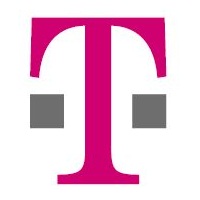
T-Mobile and Clearwire reportedly in early 4G discussions
According to a Bloomberg report yesterday, Deutsche Telekom is in early talks with Clearwire and MetroPCS about 4G development.
The report cites unnamed sources who said that a bid to buy Sprint, as had been previously rumored was highly unlikely. Instead, the sources said Clearwire needs a $2 billion investment by the end of the year to complete its WiMAX expansion, and that Deutsche Telekom could provide that funding in exchange for access to the network.

Composers await Thursday release of radically updated Notion software
In the not-too-distant past, professional musicians used dedicated sound modules and sound synthesis hardware to produce realistic representations of full orchestras. We're not so certain what composers used to do before such hardware existed, though they probably all sympathized with Ludwig van Beethoven struggling with his immortal Ninth Symphony while deaf.
As PCs rapidly evolved, their CPUs and everyday sound chips became theoretically more capable of producing and reproducing realistic sound samples than dedicated MIDI sound modules. So software very quickly assumed the role not only of sequencer but of virtual orchestra; and just like in every other field of software, one or two standards-bearers swiftly emerged: Sibelius (named for the composer) and Finale. And a very familiar logic was applied to them: If you were a composer and you didn't produce scores using either or both standards, you were officially declared non-professional.

World put on hold as Google News hiccups again
You can't fault any service for not being capable of providing 100% uptime; but you also can't help but notice the shockwaves when that one-tenth-of-one-percent comes around. This morning, Google is acknowledging that users throughout yesterday had difficulty accessing its Google News server, although it is not calling the event an outright outage.
News publishers whose promotional models rely upon Google News received notices from Google yesterday afternoon saying that users began having access difficulties at about 12:30 pm PDT (3:30 EDT) yesterday. Betanews is capable of tracking its own readership, along with referral sources, on a minute-to-minute basis; and we could actually see the event as though we were watching a seismometer. Assuming our instrumentation is accurate, our traffic from Google News began plummeting almost three hours earlier than this report, at about 1:00 pm EDT. Referral traffic from Google News began resuming its normal pattern at about 5:30.

Seagate doubles the capacity, doubles the bandwidth for Barracuda XT
The typical PC hardware introduction is targeted first at the high end of the product's respective market, often referred to as the "enthusiast" or "early adopter." This is the person expected to have more disposable income, willing to pay a premium to be first on the block, and the person I'm most often told by company representatives fits the description "Betanews reader."
But the recent trend that has breathed new energy into the hard disk drive industry -- energy it desperately needed during the worst days of the bad economy -- has to do with consumption, and it affects more than just the high end of the market. Everyday PC users are finding themselves more comfortable with larger hard drives, so much so that average street prices for 1.5 TB HDDs are now approaching $125. It's the mainstream that's driving prices lower, but that's also purchasing more drives especially now that external HDDs -- once considered dead just a few years ago -- have exploded into a commodity market. Now that consumers can simply plug them in and go, they're as ubiquitous as printers.

Sprint opens its network to Android developers
Even though it's only got one Android device in its roster so far, wireless network operator Sprint today announced that it is turning over its network and product services to Android developers through the Sprint Developer Web site's new Android section.
With the Android 1.5 "Donut" SDK update, Android developers gained access to the CDMA telephony stack, where previously only the GSM stack was supported. So now that support for Sprint's wireless network protocol is built into Android, a Sprint developer program will help software developers exploit the "Now Network" and its strengths.
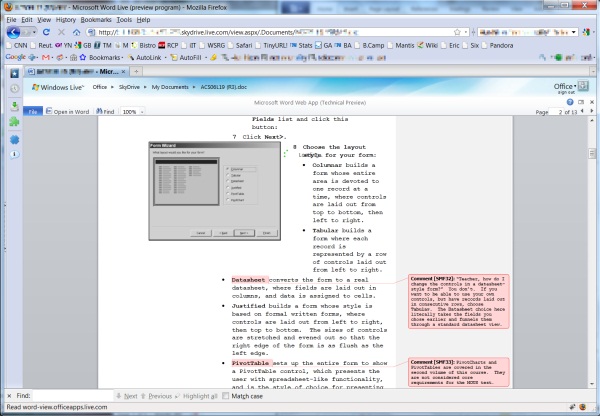
Inside Office Web Apps: Will Word Web App hold a candle to Word 2010?
One of the more startling announcements we've received from Microsoft since the first word that Office will support OpenDocument Format as an alternative default, was last week's news that access to its forthcoming Office Live Apps would be open to all users for free. We're being told again and again that there's no catch, no asterisk with small print behind it, that Microsoft is perfectly happy to let everyone edit Office documents online for free.
But does the Technical Preview give any indication that these Web apps are ready for prime time? For Microsoft to make its case against Google, Zoho, and others that produce free-for-general-use Web apps (although Google Apps' continued free state has become debatable of late), it has to demonstrate that it can carry not just the look-and-feel, but also the functionality and reliability, of traditional Office applications into the Web apps space. This is especially true if Microsoft truly does have a plan to earn revenue indirectly from the product, whether through advertising or commercial derivative services.

Accounting rules shouldn't change to benefit Apple, other high-tech companies
The Financial Accounting Standards Board will make a grave mistake if it gives into Apple and other high-tech companies demanding a change to subscription accounting rules. FASB is preparing to vote on a rule change affecting GAAP (Generally Accepted Accounting Principles) versus non-GAAP accounting. Apple is on record as supporting the change, which would artificially boost the company's quarterly revenue and almost certainly its stock price. Some other companies, including Microsoft, could receive similar benefits.
Under current rules, companies defer subscription revenue. Since they deliver services over time, revenue is accounted for by X percentage every quarter. Microsoft has deferred revenue for years, but the numbers got really big starting in 2002, following the implementation of annuity volume-licensing contracts under Licensing 6. Four times a year, Microsoft states the total unearned revenue, how much deferred revenue it realizes as real revenue and how much more the company gains each quarter.

Yet another app store, this time for Intel Atom-based netbooks
The app store bubble continued inflating today, with Intel's announcement of the beta of its week-old Atom Developer Program. It's a system which will ultimately create app stores for netbooks running on Intel Atom processors, irrespective of the operating system.
"The netbook has become one of the most popular consumer devices in the market today, but its true potential has been limited by applications that are not optimized for its mobility and smaller screen size," said Renee James, corporate vice president and general manager for Intel's Software and Services Group, during a presentation at IDF today. "The Intel Atom Developer Program provides a great opportunity for developers to create useful and inventive applications that will unlock a netbook's potential while opening a new sales and distribution channel."

Google Sync brings push Gmail to iPhone, WinMobile, S60
Today, Google has announced that Gmail push updates have been added to Google Sync, the Microsoft Exchange ActiveSync-based tool that lets BlackBerry, iPhone, Symbian S60, and Windows Mobile devices to share calendar entries and contact info with a user's Web-based Google account. The service, which debuted in beta earlier this year, automatically pushed Gmail inbox content to the synched phone's native e-mail reader.
This announcement comes as good news for iPhone users who have, until now, had to pay for push Gmail updates by including it in their MobileMe subscription, or by paying for apps like PushMail or G-Push Mail. But it's also especially unfortunate for Tiverias Apps, makers of GPush for iPhone, an application which received a considerable amount of attention in mid-Summer, but didn't get approved until August, and has only been available in the App Store for a month and a half.

The next clash: Who gets to regulate net neutrality?
In yesterday's highly anticipated policy speech from newly appointed FCC Chairman Julius Genachowski, the FCC under the Obama Administration has officially appointed itself the federal regulatory body overseeing "net neutrality." Since the term was coined by Congress in 2006, the phrase has morphed radically to mean many things. Originally conceived as a principle preventing an ISP from offering certain content providers premium bandwidth unavailable to, or unaffordable by, others, it came to mean a principle preventing an ISP from limiting users' access to certain content or applications.
But the concept has morphed so many times now that even the reader discussion of yesterday's Genachowski speech centered around an argument over what it meant. Yesterday, local TV news reports about the speech defined the principle as preventing Apple from denying access or placement of applications on its mobile App Store.
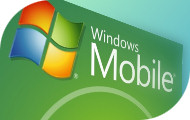
Windows Mobile 6.5 struggles to gain ground against iPhone and Android
Earlier this month, Microsoft announced support for Windows Mobile 6.5 from North American mobile carriers including AT&T, Sprint, Verizon Wireless, Telus, and Bell Mobility; along with major phone makers Samsung, HTC, LG, HP, and Toshiba. But not Palm...and it's that fact which got the most attention.
But while Palm shoveled out plans last week to dump Microsoft's mobile OS, support for Windows Mobile is now popping up from places ranging from AT&T to innovative new VoIP provider Zer01 and media content specialist (and iPhone/Android/RIM developer) FlyCast.
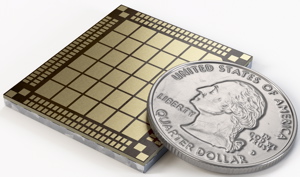
Tiny new module brings embedded mobile broadband to more devices
In March, Ericsson launched an always-on mobile broadband chip for notebooks which could leverage the power of a persistent HSPA/GPRS/EDGE connection on remote security and monitoring features in addition to standard wireless use.
Today at the Intel Developer Forum in San Francisco, Ericsson has announced it has made a similar module that's one third the size, and that consumes 40% less power.



